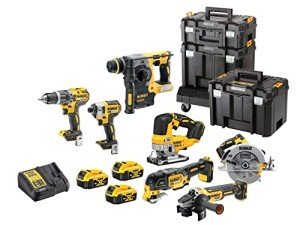14 Savvy Ways To Spend Extra Build Your Own Tool Kit Budget

Build Your Own Tool Kit: A Comprehensive Guide
Structure your own tool kit is an essential endeavor for any DIY lover, house owner, or hobbyist. Having an efficient and extensive tool kit not just allows you to deal with numerous projects efficiently but also saves you time and cash in the long run. This guide will explore how to build your own tool kit, what tools to consist of, and respond to some often asked questions.
Why Build Your Own Tool Kit?
Developing your own tool kit offers numerous advantages:
- Personalization: You can tailor your toolkit to satisfy your specific needs and jobs.
- Quality assurance: You can select the tools based on individual preference for quality and sturdiness.
- Expense Effectiveness: You can avoid acquiring unnecessary tools and focus on what you require.
- Learning Experience: Building your own toolkit is an educational experience that improves your understanding of your tools.
Important Tools for Your Tool Kit
Creating a tool kit can seem daunting, especially with the variety of tools readily available. Below is a categorized list of essential tools, from hand tools to power tools, to assist you start:
| Category | Tools | Purpose |
|---|---|---|
| Hand Tools | Screwdrivers (different sizes) | Tightening and loosening up screws |
| Hammers (claw and rubber) | Driving and removing nails | |
| Pliers (needle-nose, slip-joint) | Gripping, twisting, and cutting | |
| Wrenches (adjustable and socket) | Tightening or loosening bolts | |
| Tape Measure | Measuring length | |
| Cutting Tools | Utility Knife | Cutting numerous materials |
| Handsaw | Cutting wood | |
| Power Tools | Cordless Drill | Drilling holes and driving screws |
| Circular Saw | Cutting big sheets of material | |
| Fasteners | Nails, Screws, and Anchors | Securing products |
| Wood Glue | Bonding wood pieces together | |
| Security Gear | Shatterproof glass | Securing eyes |
| Work Gloves | Safeguarding hands | |
| Ear Protection | Lowering sound exposure | |
| Organizational | Tool Box or Bag | Keeping tools arranged |
| Labeling Supplies | Easy identification of tools |
Creating Your Tool Kit: Step-by-Step
- Identify Your Needs: Determine what jobs you prepare to carry out. Different projects need various tools. For example, if you're mostly working with wood, concentrate on wood-cutting tools.
- Spending plan Planning: Decide how much you are ready to invest in your tools. Investing in quality tools is important, as they can last a life time.
- Purchase Tools Gradually: Start with the most essential tools and gradually add more specific tools as required.
- Organization: Invest in a tough tool kit or organizer. Keep regularly used tools easily available while saving others safely.
- Upkeep: Regularly clean and maintain your tools to prolong their life expectancy and ensure they perform well.
Benefits of Different Tool Types
| Tool Type | Advantages | Drawbacks |
|---|---|---|
| Hand Tools | No requirement for electrical energy, portable, accurate | Can be labor-intensive |
| Power Tools | Conserve effort and time, boost accuracy | Needs electricity, much heavier |
| Cutting Tools | Versatile and effective for different products | Needs proper handling and maintenance |
FAQ: Building Your Own Tool Kit
1. What is the minimum number of tools I require to begin with?
A standard toolkit can start with just 5-10 necessary hand tools (e.g., a hammer, screwdrivers, pliers, a tape step, and an utility knife) depending on your requirements.
2. How do I pick the right tools?
Think about the kinds of tasks you will carry out. Research study the tools used for those projects and evaluate the quality and brand reliability.
3. Should I purchase brand-new or used tools?
Both choices have merit. New tools frequently come with warranties, while utilized tools can be more economical. Make sure used tools remain in excellent condition and working well.
4. How should I preserve my tools?
Keep them tidy, store them correctly, and inspect regularly for any required repairs or replacements. Oiling and honing cutting tools will likewise boost their performance.
5. Can I create a tool kit on a budget?
Yes! Cheap Power Tool Sets for economical tools, store throughout sales, or consider pre-owned alternatives. Focus on the most needed tools initially.
Last Thoughts
Structure your own tool kit is not only a useful financial investment however also a gratifying experience that improves your skills. It makes it possible for people to take on tasks with confidence and proficiency. By carefully selecting a mix of hand tools, powered tools, cutting tools, safety gear, and organizational supplies, anyone can develop a personalized tool kit that meets their unique requirements.
With a well-rounded tool kit in hand, individuals can open their imagination and see their concepts come to life, task by task. Happy structure!

